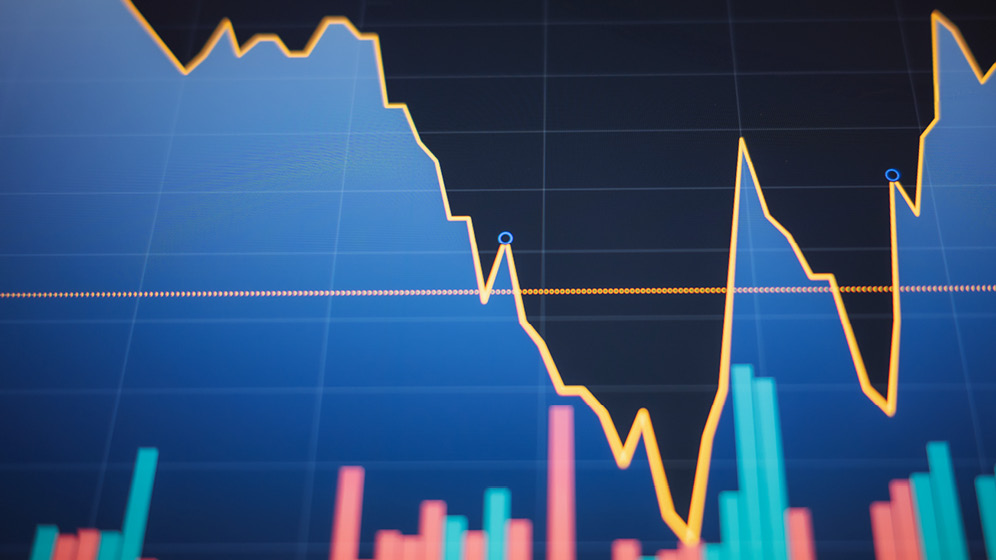What does the “W” shaped recovery represent for investors in 2024? John Bai, SVP and CIO at NEI Investments discusses.
The big question facing investors is this: will the unprecedented monetary tightening cycle lead to a hard or soft landing? By the end of 2023 it was clear markets were already pricing in the soft-landing scenario. Now U.S. Fed fund futures are currently pricing in almost six rate cuts in 2024, while Canada is pricing in almost five. This fueled the strong year-end rally that pushed the Dow Jones Index and Nasdaq 100 hit new record highs, while bonds also saw an aggressive rally as the yield on the US 10-year dropped over 100bps during the fourth quarter. However, this may be too much too soon, particularly since we believe we are in the middle of a “W” shaped recovery that will continue to impact equity markets in 2024.
We have already experienced the first two legs of the “W”. The first down leg came in 2022 as investors had to wrestle with the transition from a “transitory inflation” scenario to the “higher for longer” reality that resulted in a severe market drawdown. In 2023 we experienced the reversal, as data continued to show that peak inflation was behind us despite a stronger-than-expected U.S. economy. As data continues to show that inflation is moderating to targets, central banks will be moving from peak interest rates to cuts. While this is generally good news for both equities and bonds, the euphoria that gripped markets in December is already waning and investors should expect more bumps along the way.
Using history as a guide we see the end of peak rates has often resulted in a recession. In fact, seven of the nine rate hike cycles have resulted in a recession, but the biggest question for investors is when? Over the last few decades, the time gap between when tighten cycle ends and when a recession begins has been growing, with the last recession starting 15 months after rates peaked. One explanation for the lengthening lag is that central banks may be getting better at their jobs, as they are more proactive about rising rates and pausing when necessary. So, based on this timing, we may not see a recession until late 2024.
The period after peak rates is a great environment for bonds, as returns are almost always positive. Longer bonds have the potential to do even better, so investors should be looking for exposure to a wider universe with increased duration. High yield bonds present an interesting opportunity in this period, especially for investors with a longer time horizon since starting yield is one of the most important factors when looking at returns on a 10-year time frame. Starting yield also helps dampen volatility in the years ahead. Even on a shorter time frame though, high yield has historically returned about 12% in the 12 months following peak rates.
We expect Canada will continue to struggle in the first half of 2024, as the odds of a recession in Canada look higher than in the U.S. As the year progresses, the yield curve should normalize and the spread in bonds should be positive for Canadian bond investors generally. However, there are attractive global opportunities in fixed income as well. A global approach requires evaluation on a country-by-country basis because different regions are at different stages of the cycle with some emerging economies already cutting rates, while other regions look to hold rates for longer. For this type of strategy we rely on our roster of global subadvisors—like Amundi Asset Management—to leverage their regional expertise as they have been able to add value in different rate environments over the past decade.
Looking at equities obviously when the next recession begins will dictate whether they will outperform or not, though right now investors are too narrowly focused on the path of interest rates and whether there will be a recession. Over the long run, the economy actually has little correlation with equity returns, earnings and earning expectations have much more explanatory power. For example, 2023 had lots of upside economic surprises, so earnings came in above expectations mostly because they were already set at a low bar. We are a little concerned about slowing economic momentum, which could cause equities to struggle as earnings are revised lower, but we do expect a rebound in the back half of the year that may take equities to new all-time highs.
Unlike last year where many active managers struggled because the “magnificent 7” drove most of the equity gains in the U.S., we expect to see broader market performance in 2024. We also see more opportunities outside of the U.S. as EAFE, Europe and Emerging Markets have reasonable valuations relative to history. Regardless of which geographies we are exploring, we prefer high quality names that have strong free cash flows and attractive valuations.
So does the “W” shaped recovery represent a warning or a win for investors in 2024? Likely both. We plan to be patient and will looking to take advantage of pullbacks as attractive entry points. We see a lot of opportunity for active managers in the year ahead and believe our global roster of subadvisors will be able to showcase their value in a market that requires a more selective approach.
Read NEI’s 2024 Global Market Outlook to see the best opportunities from their subadvisors.




